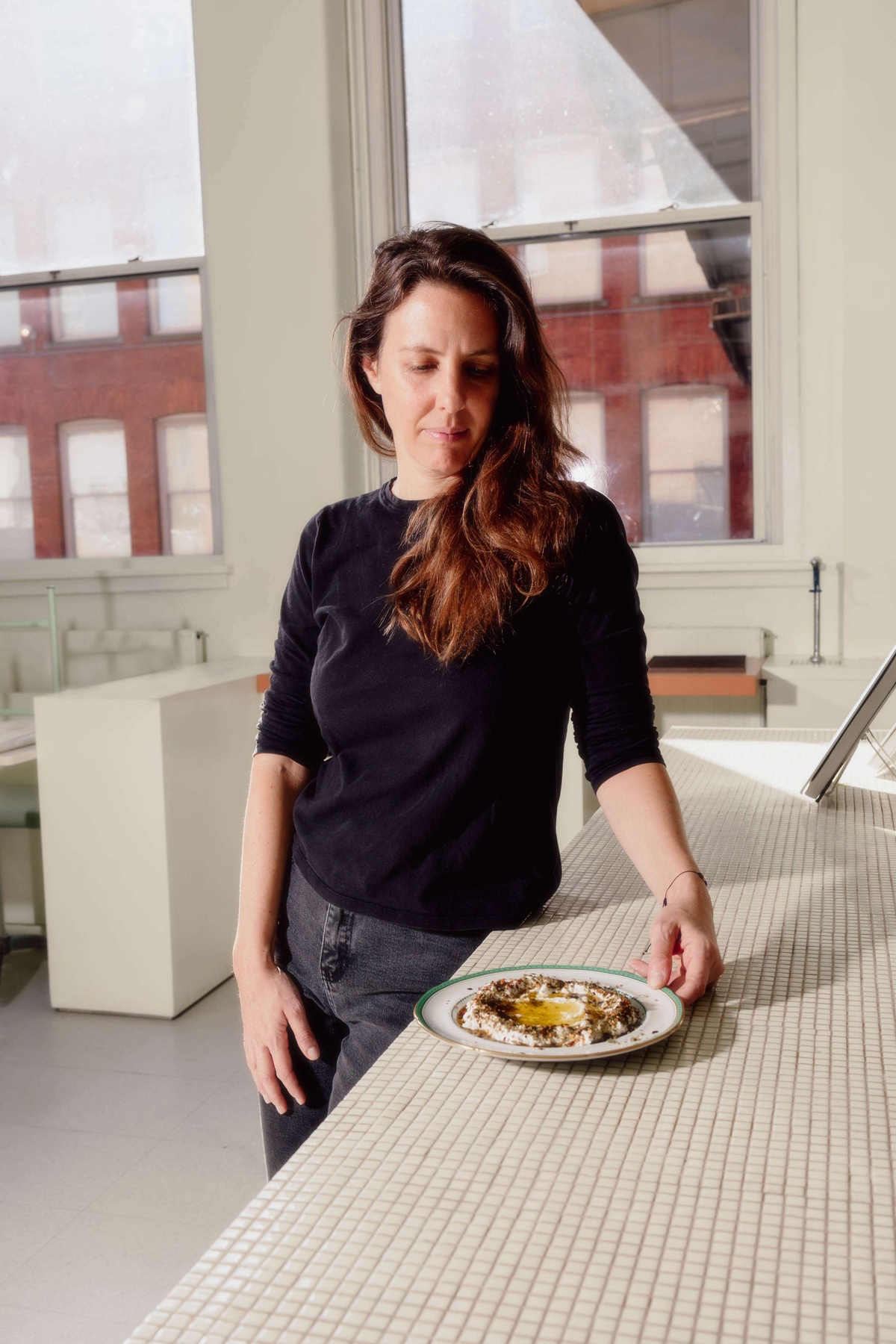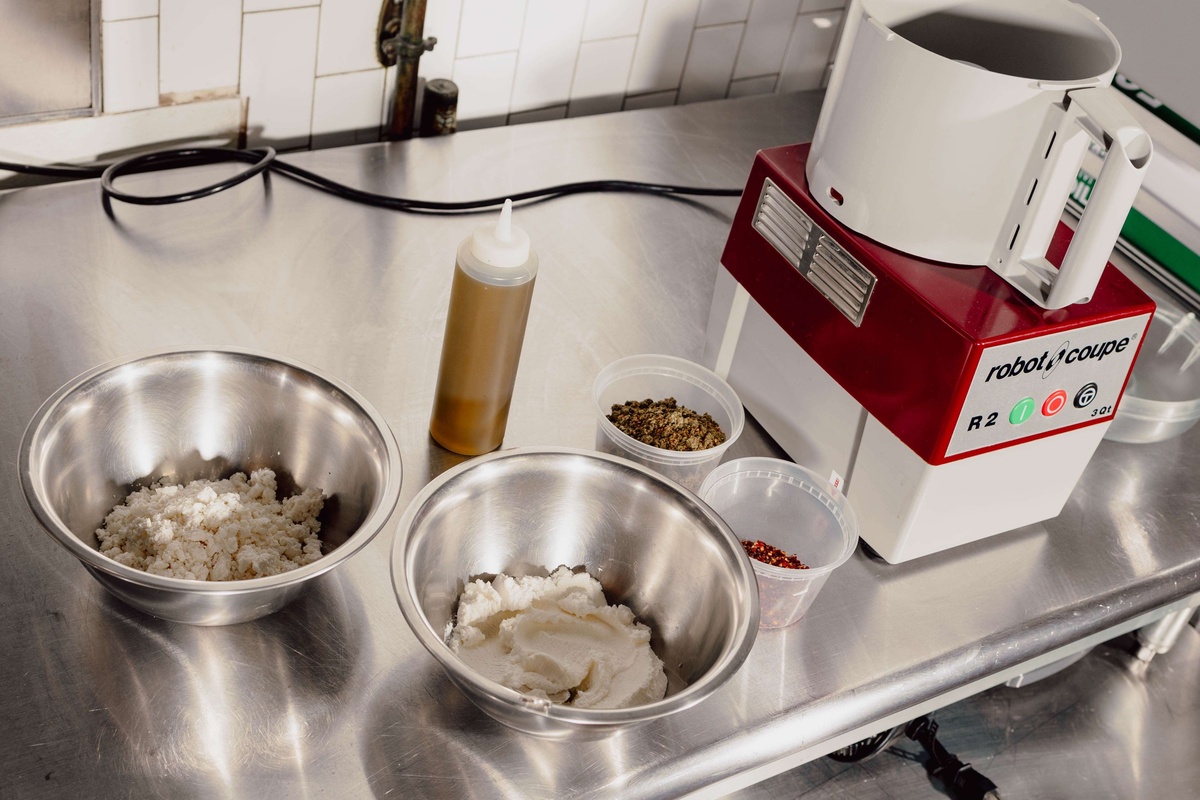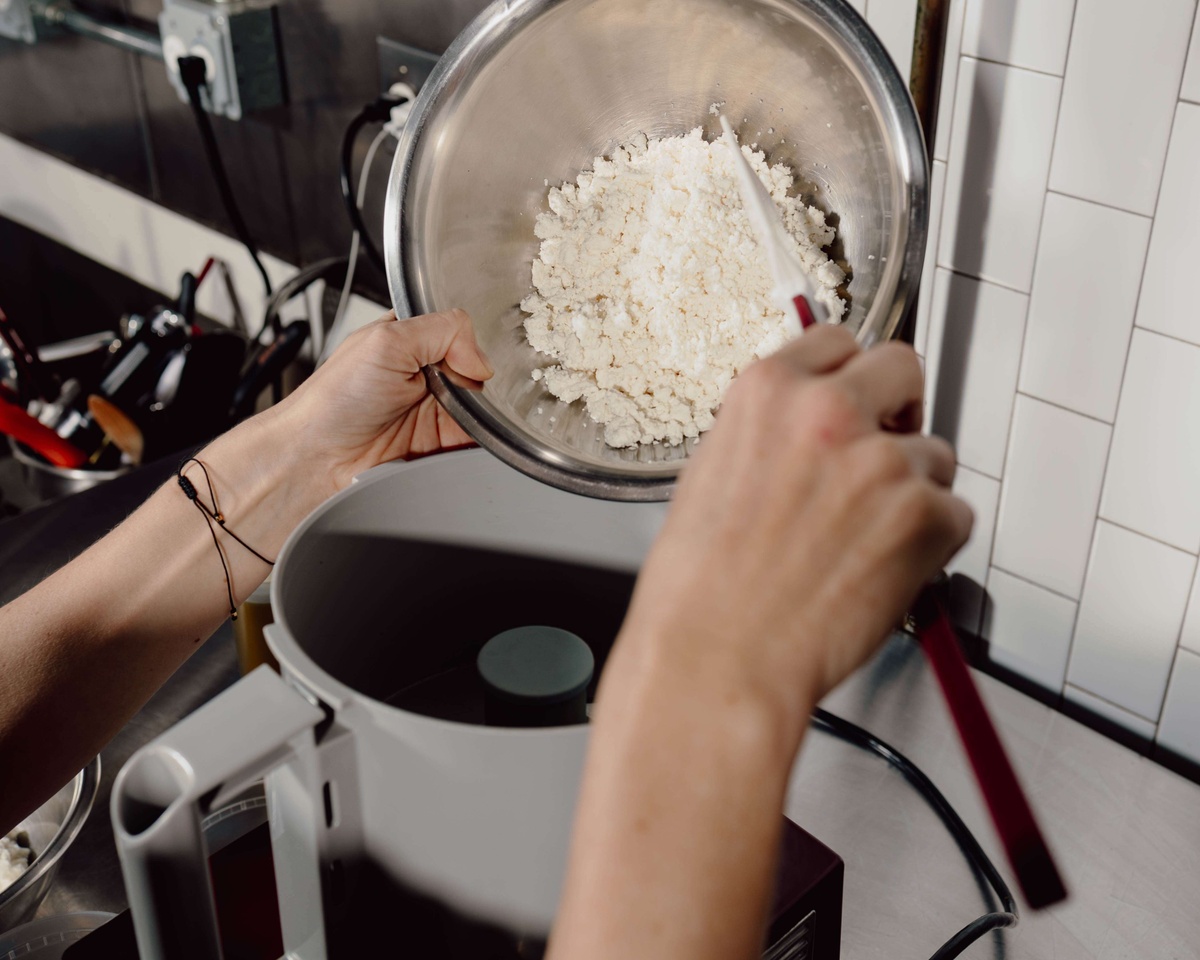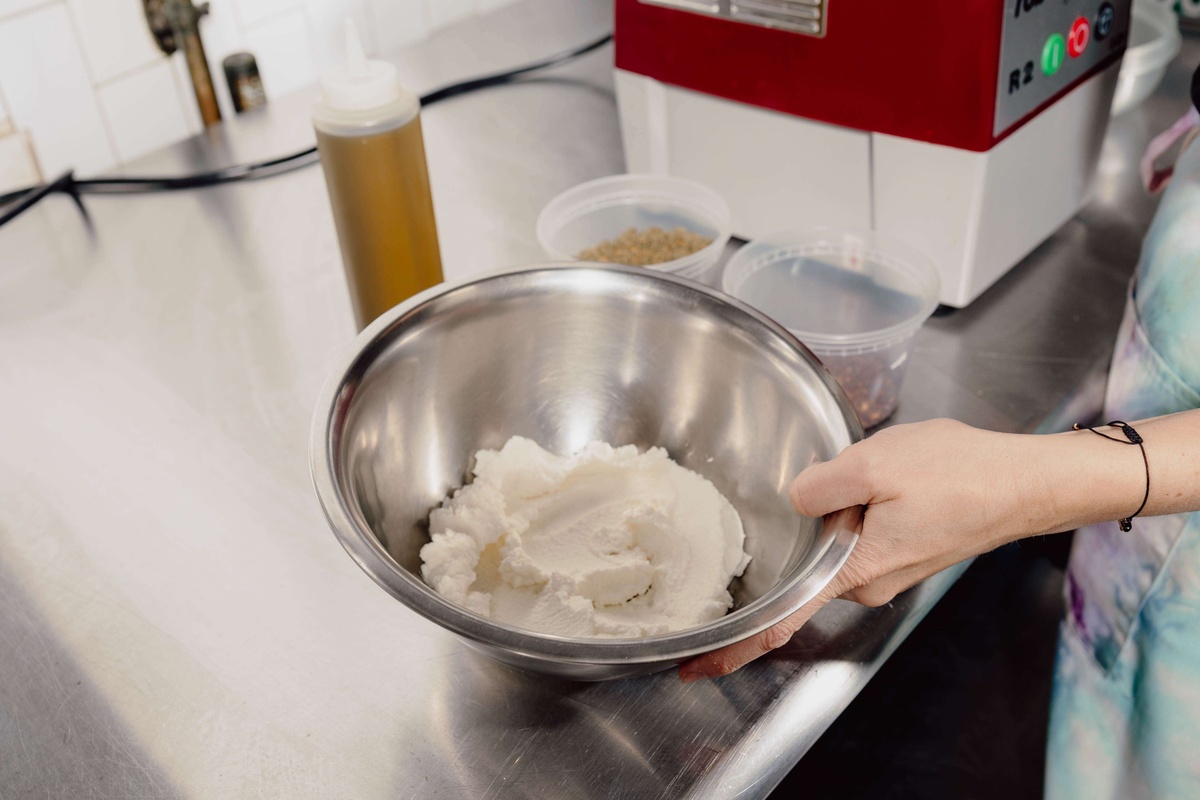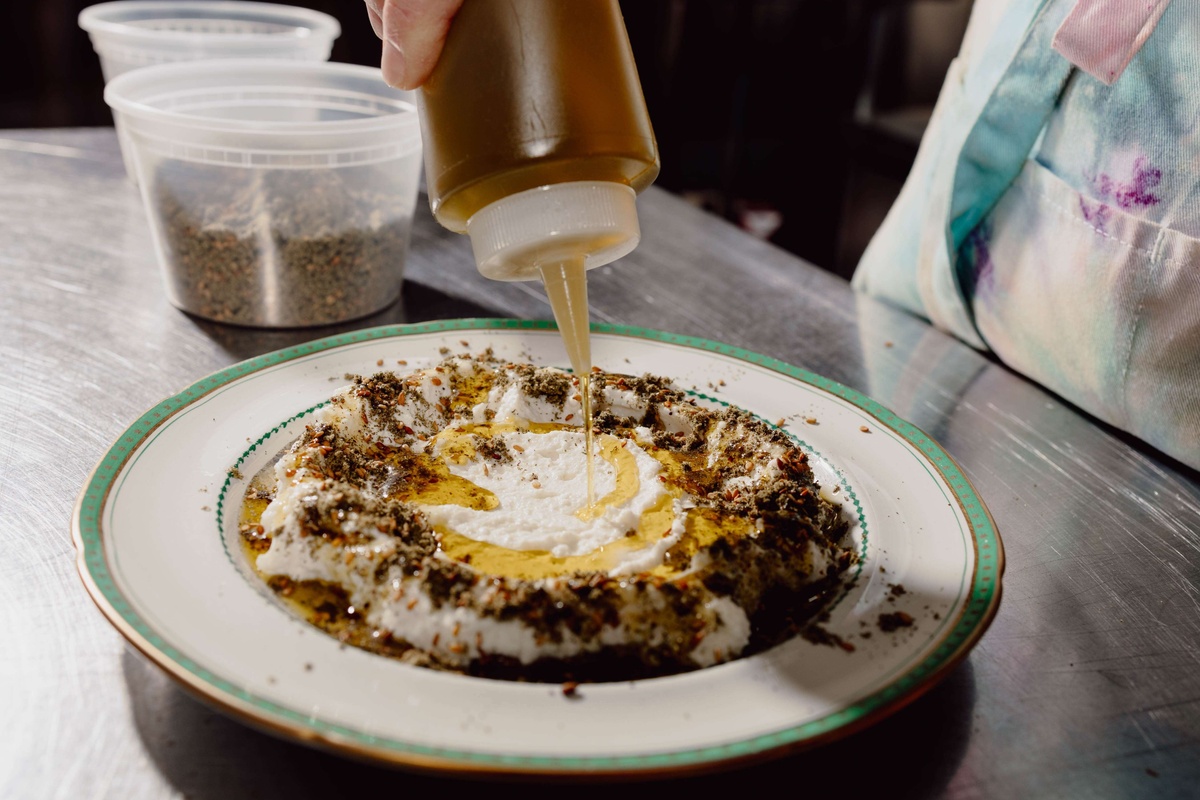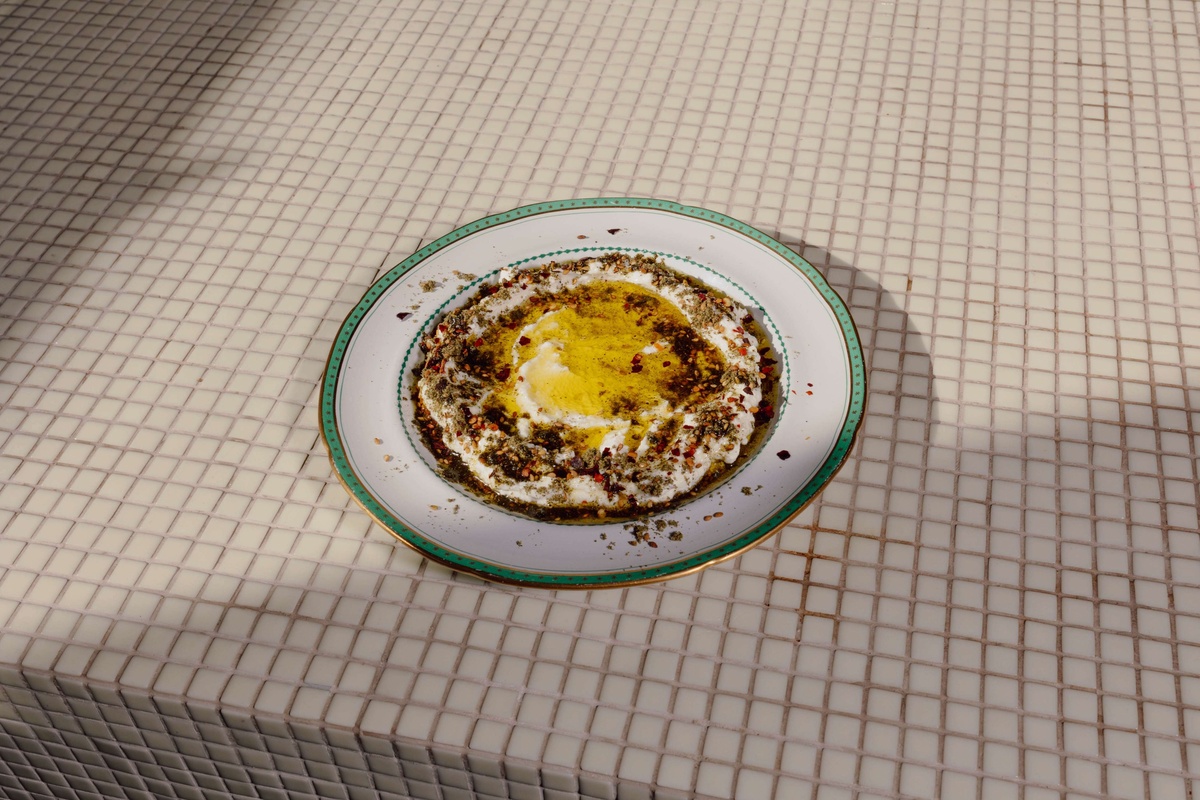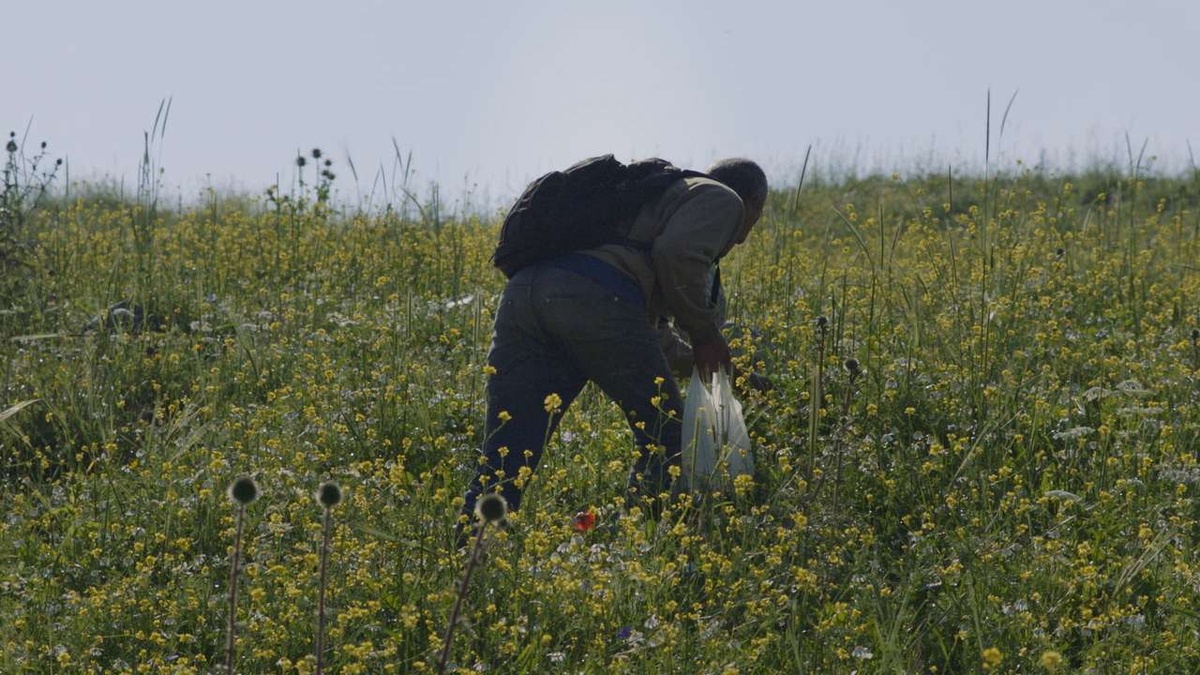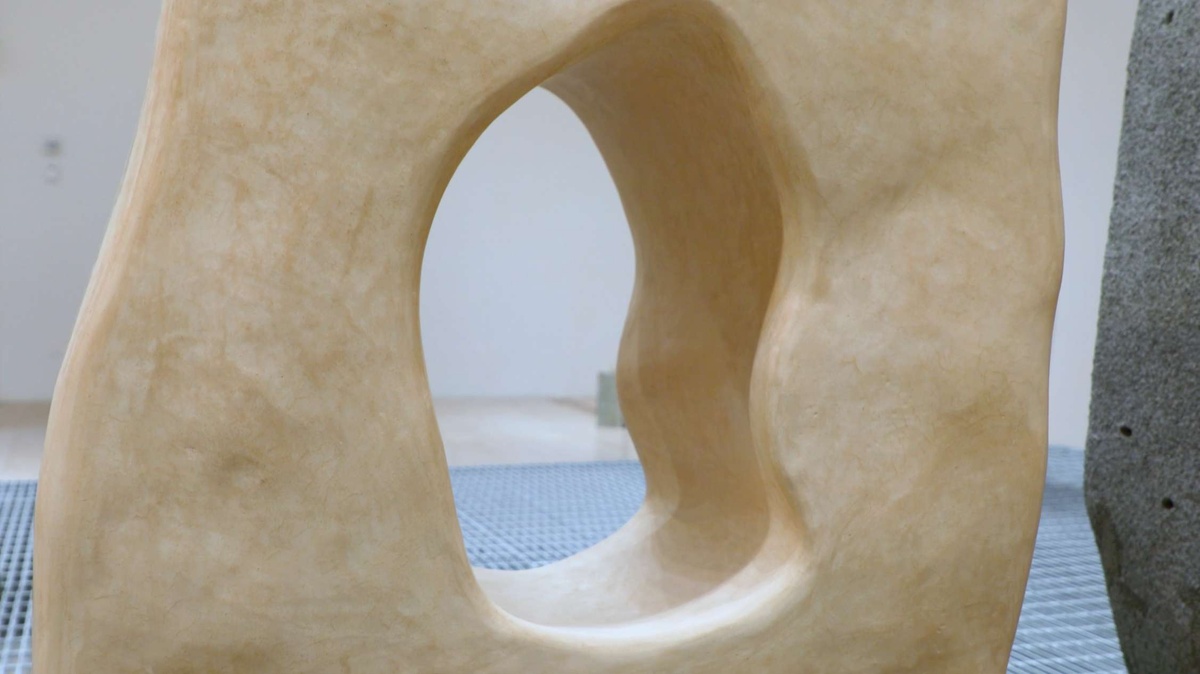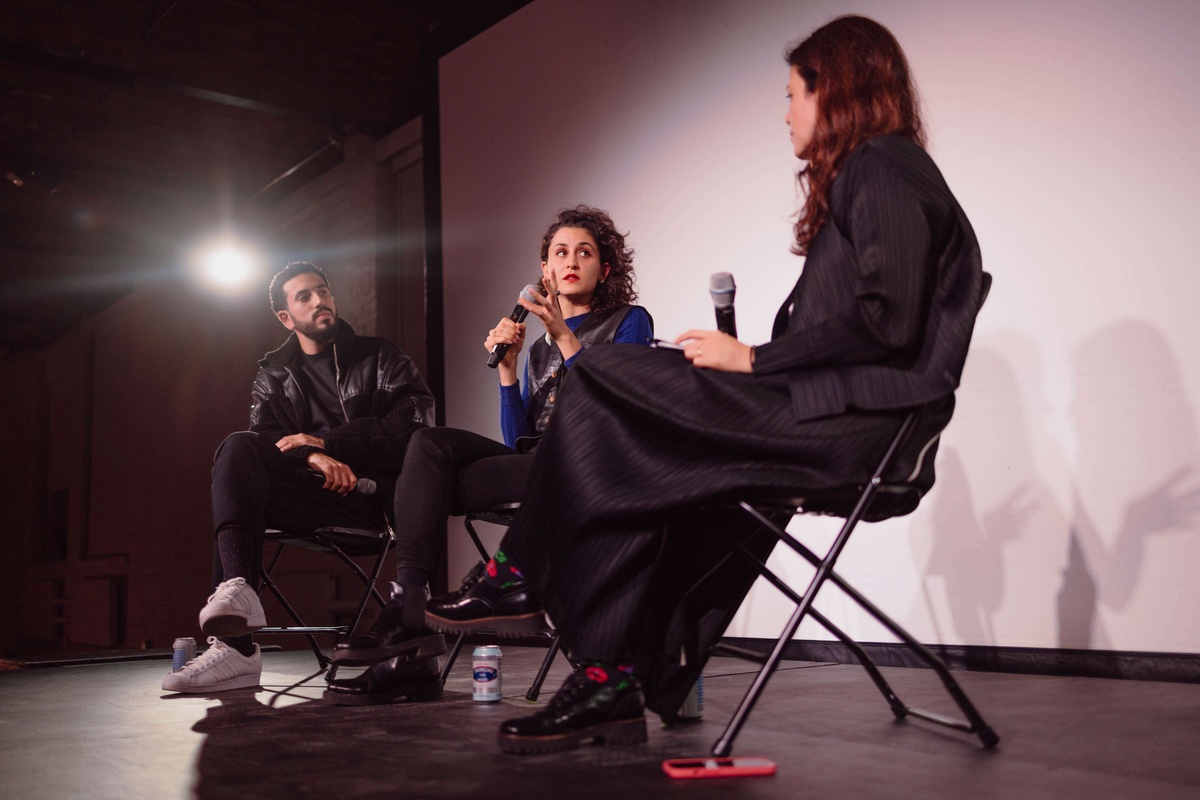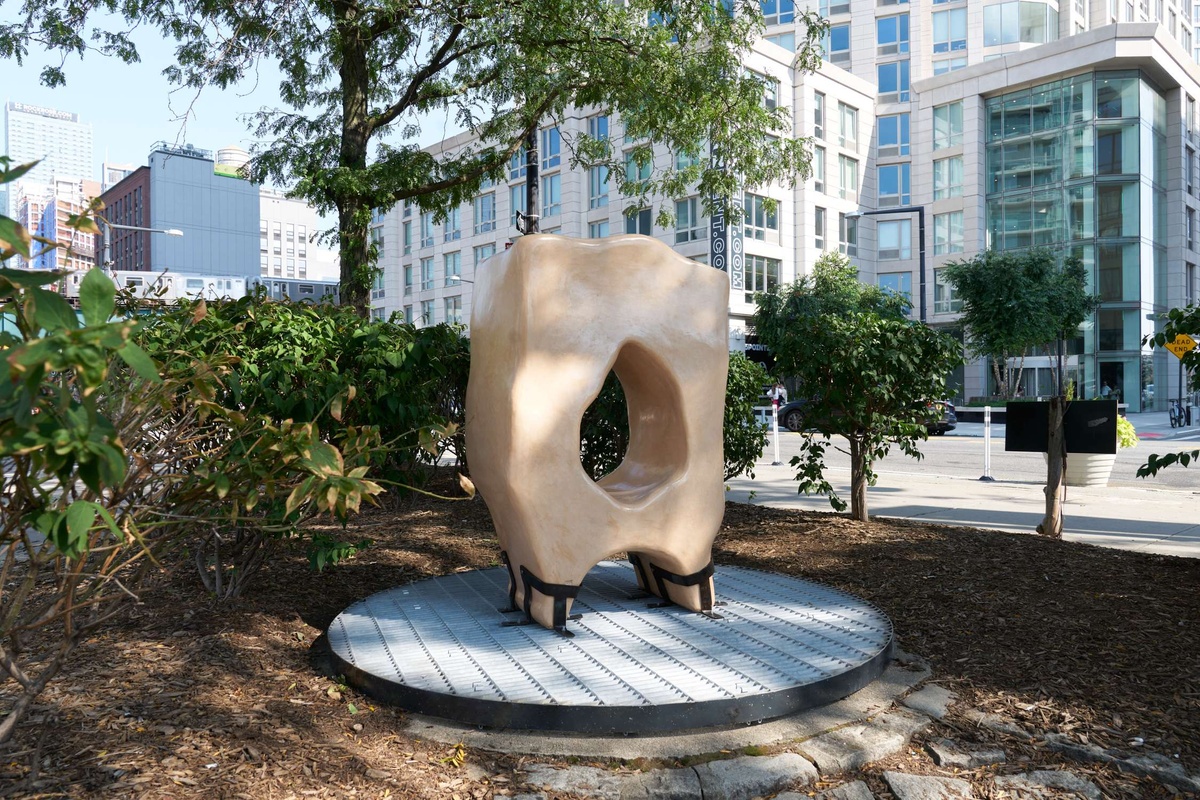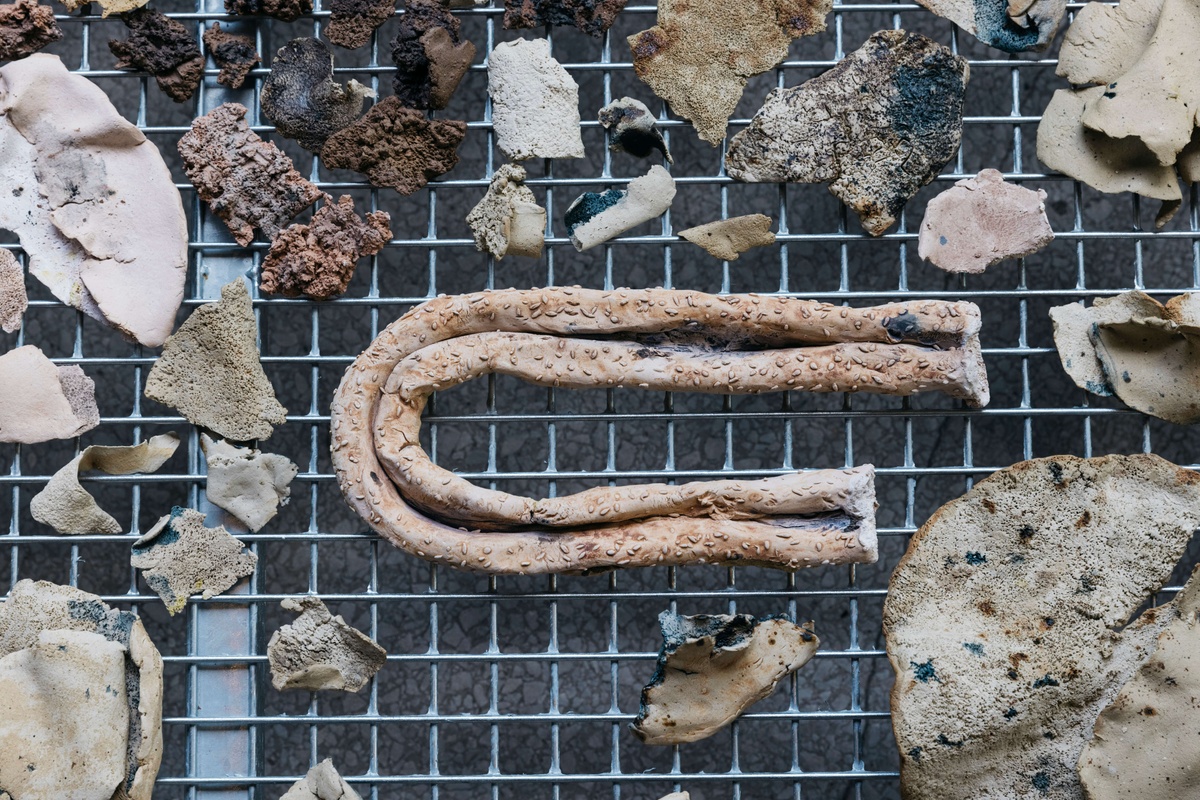Looking for Za'atar
- Recipe
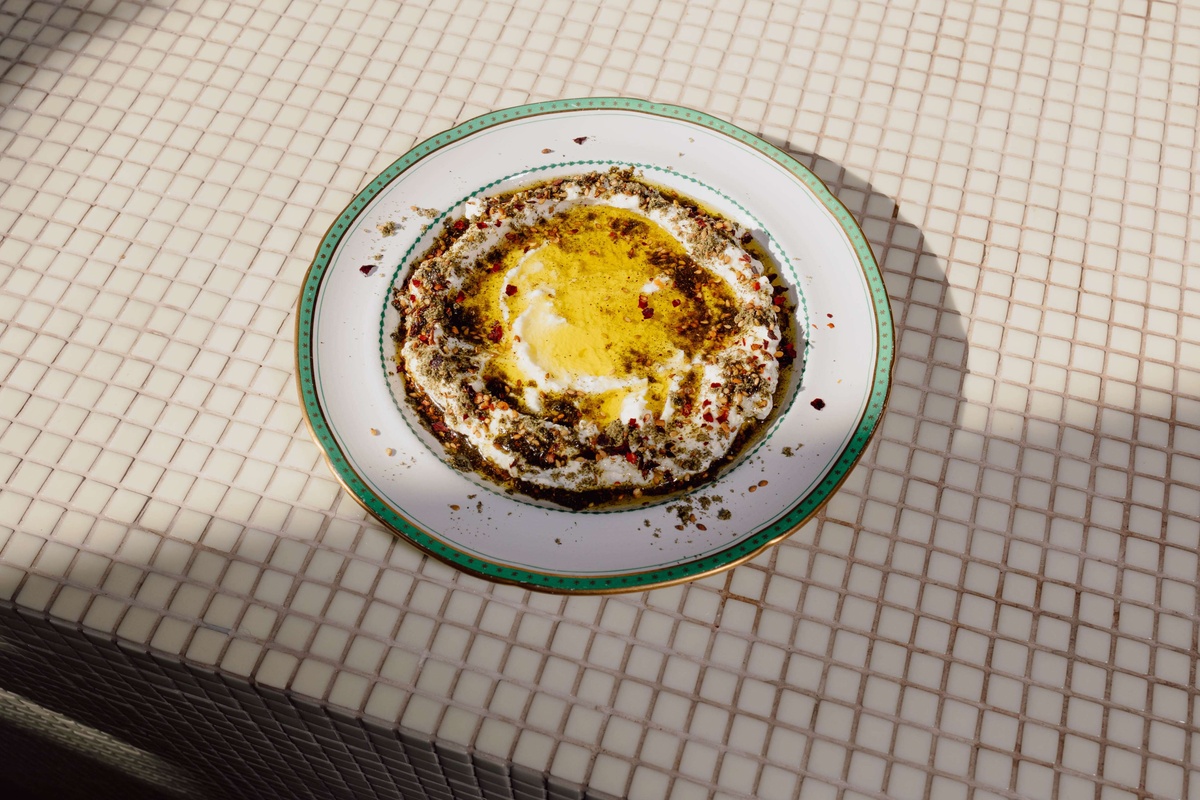
In conjunction with the presentation of Jumana Manna’s latest film, Foragers (2022), chef Mina Stone will offer a new menu item featuring Za’atar on whipped feta. Find it at Mina’s restaurant at MoMA PS1, or make it at home with the recipe below.
Za’atar—a word used to describe both an herb (thyme) and herb mixture (thyme, sumac, sesame seeds, and salt)—is among the most ubiquitous and beloved flavors of the Levant. Foraging wild Za’atar is an ancient practice, one closely tied to Palestinian identity, food traditions, and the land where it grows. Foragers chronicles the gatherers of wild Za’atar as they track the plants, and are themselves pursued by the Israeli Nature Protection Authority. The film reveals the ways in which longstanding cultural traditions are both constrained by, and struggle against, neoliberal and colonial policies, even those framed as preservationist. Read more about this issue in Manna’s essay for e-flux Journal.
To accompany Mina’s recipe, Palestinian curator and researcher Adam HajYahia contributed an essay on the meaning and history of foraging, which you can read below.
Whipped Feta with Za'atar
Serves 6-8 as a mezze.
Ingredients
– 2 Cups good quality feta (preferably Greek), crumbled
– 1 Cup ricotta
– 1 Tablespoon or so of water
– Za'atar (I use Burlap and Barrel Za'atar from Ein Samiya)
– Extra virgin olive oil
In a food processor, add the feta and ricotta and blend until smooth. Add a tablespoon of water to loosen the mixture until it is the consistency of peanut butter.
To assemble the dip, dollop the whipped feta onto a platter, sprinkle generously with Za'atar, and then drizzle with lots of olive oil. Serve with fresh pita and sliced cucumbers.
Season of the gleaners by Adam HajYahia
Palestine is renowned for its olive harvest season. By the end of the summer, as the stubborn heat makes way for autumn, families join forces to work their lands and harvest the newly ripe olives. Coming from a family of fellahin 1 on my paternal side, I spent years harvesting the two olive trees behind our house, separating the green olives for fermentation and the black ones for extraction, producing an almost full tanakeh 2 of olive oil. Carrying our humble (and oftentimes laughably small) sackcloth of olives, we would drive all the way from my hometown Taybeh to Zemer to extract our liquid gold using one of the last remaining stone-press mills. But this is not a story about olives or oil, but a closely related cousin.
My mother’s side of the family are workers. They have no land to give them olives or oil. They were part of those who waited all year for a different harvest season: Za’atar season. My hometown Taybeh has a notorious history. It is located in what the British brilliantly named the “Triangle” region—formerly known as “The Triangle of Terror,” in reference to the exceptionally powerful, anti-colonial, and anti-imperial Palestinian insurgency that took place in the Tulkarm, Jenin, and Nablus triad during the Great Arab Revolt (1936–39) —a term that reverberates until this very day within the colonial matrix. But amongst other signifiers, Taybeh is also known for its wild, spicy Za’atar, which grows across Samaria. Every year, my grandmother would tell me, “The landowners pick what they grow in their lands; we pick whatever the wild lands decide to give us,” as she lobbied every working hand to join her up the hills.” We would wait for a dry winter day and go foraging adjacent to Far'un, where “Christian Palestinians once lived,” as my grandmother repeated every season. Like those who pick olives for fermentation or extraction, my grandmother picked Za’atar to make Dukkah and Kras.
In most places, Dukkah remains one of the most popular and familiar byproducts made of Za’atar. According to my grandmother, it is made by mixing ground, dried Za’atar leaves from the Triangle with Nabulsi or Jaleeli sumac, then combined with sesame seeds from Khan al-Zayt 3 in Jerusalem. She would always note, in a disheartened tone, that many people are unaware that Khan al-Zayt, the oil market in the Old City of Jerusalem, isn’t only famous for olive oil production but also sesame oil production, the base of tahini and halawa. But Kras is my personal favorite. A Triangle specialty, Kras Za’atar is a mixture of fresh green Za’atar leaves, ground sumac, chopped white or green onions (depending on the village you’re from), and ridiculous amounts of olive oil, all added to fresh dough. The ingredients are kneaded together, flattened into big disks, and baked in a cob oven. Although the Kras is made fresh during harvest season, it can be frozen and preserved until the next year. The Za’atar leaves foraged on a dry winter day feed an entire family for a year.
A few years ago, the two olive trees behind my family home were damaged by sewage water. Underground pipes had exploded nearby, making our trees fall ill, so we decided to quit the harvest for seven years. Since then, I’ve started joining different families who needed extra working hands across Palestine, and a couple of years ago, I joined my lover’s family in Buqei'a, a small village bordering South Lebanon. They were fellahin, like my father’s family, and had more than fifty trees to harvest. I arrived the night before the big day, had dinner, and got tucked into bed early to be ready on the land before dawn. As the sun rose, we would start by extending white sackcloths on the ground beneath the trees in order to make the work of collecting the fallen olives easier and more efficient. At around noon, we would have lunch, get some rest, then continue working until dusk. On the second day, after harvesting the last olive tree, my lover’s uncle and I began to pick the sackcloths, pouring everything into large containers in preparation for the electric-press mill. As we uncovered the land from the sackcloths, I noticed many scattered olives that escaped our capture, and I thought it wise to pick them up. The moment I kneeled, I heard their uncle yelling toward me “leave them, they’re not ours.” I looked over, imploring him an explanation, to which he responded by saying, “The Jawalat 4 will come and collect them in the next couple of days, we always leave olives behind for those without land.”
[1] Arabic for peasants.
[2] In the context of olive oil, Tanakeh refers to a large container of oil. Each region has a different amount of liters/gallons that fit a Tanakeh, but everyone uses it as a fixed unit to measure olive oil extraction upon production.
[3] “Khan al-Zayt” خان الزيت - literally translates to House of oil, or Oil Market, and it is part of the various other markets located in the Old City of Jerusalem.
[4] Jawalat جَوّالات is the feminine word for “roamers” in Arabic.
Adam HajYahia is an independent researcher and curator based between Palestine and New York.
